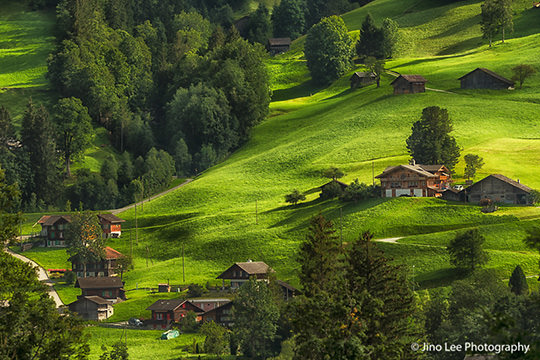There is little in the world that evokes wanderlust better than a series of well-taken travel photographs. Landscape photography, in particular, elicits a sense of awe, bringing out a whiff of nature at its finest and drawing you into the natural wonders of the earth. This month, professional travel photographer Jino Lee talks us through his top 5 tips for landscape photography. (Photos by: Jino Lee, Text by: Natalie Koh)

When Jino Lee first started his career, he took on a role in the music & sound engineering industry for 13 years before making the switch to photography in 2003. And he hasn't looked back since.
Despite kicking off his photography career in events and wedding photography, his true passion has always been in travel photography. "What inspires me most is the opportunity to travel to ‘off the beaten track' places, meeting the locals, learning their culture and simply being on the road," he enthuses.
"Landscape (seascape & cityscape included) photography is part and parcel of travel photography. The other key subjects in travel photography are human interest, culture and lifestyle."
The key to landscape photography, he says, is good lighting and vantage points. That brings us to his top landscape photography tips he picked up in his 12-year career as a photographer.
1) As lighting is the key to success, shoot during the early hours of the morning or late in the afternoon till early evening where the sun is low and the light quality is at its best.
2) Know your location, go early to scout the location and find the best vantage point.
3) Use Manual (M) mode so that you can have full control of your exposure.
4) Use a smaller aperture setting (higher f-stops e.g. f11 and above), with a sturdy tripod and cable release.
5) Look for an interesting foreground Interest to enhance your shot if you are shooting with a wide angle lens (16mm to 24mm) and from ground level. If you are shooting across from a hill, use a telephoto lens (100mm and above) and look for interesting subjects to be your Focus of Attention.
Above all, Jino says it's important to have patience. "Sometimes one has to go to that same location a few times to get the best light. As for seascape, even after the sun has set, you can still do a long exposure of several minutes to get a lovely glow of light that our human eyes cannot pick up."




*Photos are taken with the EOS-1D X with an assortment of Canon L lenses: EF16-35mm f/2.8L II USM, EF24-70mm f/2.8L II USM and EF70-200mm f/2.8L IS II USM.

Jino Lee is an international award winning photographer based in Singapore and former resident instructor with Canon Imaging Academy for over 8 years. He finds inspiration in photographing people and culture especially in developing countries. The award-winning photographer has also had the honour to judge National Geographic Channel’s photography contest. When not at work, he loves to travel back to his hometown Penang to enjoy his favourite hawker food and dessert.

































